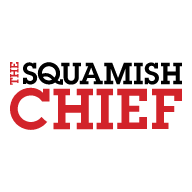MELBOURNE, Australia (AP) — stood with his hands on his hips, listening intently to Andy Murray — his longtime on-court rival and now, stunningly, — between sets at Rod Laver Arena. Murray pantomimed the swing of a two-handed backhand. Djokovic took it all in, then responded.
The scene was remarkable because of the new — and “a little bit strange,” Djokovic said Monday night — relationship between these two stars of their sport, yes, but also because that face-to-face conversation was able to happen at all in the middle of a .
It's part of a new setup at the three biggest stadiums at Melbourne Park, where is giving up to four people from each player's entourage a chance to sit in coaches' boxes that include access to screens with real-time data and are positioned at court level in corners right near the playing surface, instead of up in the stands.
“A few times, I did approach Andy, asked him something about whatever it was, whatever shot,” 24-time major champion over 19-year-old American Nishesh Basavareddy in the first round. “He was giving me his feedback, his guidance and opinion.”
It’s the sort of normal and obvious interaction between coach and athlete that is seen in nearly every team sport, nearly every day, and sometimes even overheard on TV broadcasts. But tennis is different, both because it's almost always an individual endeavor and because in-match coaching traditionally was completely forbidden on the elite tours.
That's gradually changed in recent years, with various attempts to , which often was done furtively despite rules against it (memorably, when coach Patrick Mouratoglou was caught signaling during the 2018 U.S. Open final against Naomi Osaka).
The International Tennis Federation announced last year that coaching is fine everywhere now, which not everyone thinks is a good idea.
“That’s something that should be between the two players. Being able to make strategies, how you handle decision-making, coming up with these kind of things under pressure, is just as important as hitting a serve or hitting a forehand,” said , the U.S. Open runner-up in September and seeded No. 4 at the Australian Open. “It would be insane if someone could come on the court for you and serve, right? So why can someone tell you what to do?”
That debate seems to be settled, though.
The new question: Is it a good idea to let coaches be so close to the action, where they potentially can have even more influence on an outcome?
“I think it's fine. My coaches can tell me whatever they want, but if I’m not applying it, it’s not going to happen,” two-time Australian Open champion Victoria Azarenka said. “We invest so much money to have coaches to elevate our performance, I don't see why that shouldn’t be applied.”
One thing Djokovic and other players say they appreciate: It's a lot easier to hear a coach when he or she is seated nearby.
When they're up in the seats near the ticket-buying spectators in the usual arrangement — and a spokesman for the U.S. Tennis Association said Tuesday there are no plans to put something like the Australian Open pods in place for this year's U.S. Open — it can be difficult to discern anything amid the cacophony.
“I like the energy of it. I like to have a little bit of a back-and-forth with my coach. And it gives me an opportunity to either blow off some steam or get some input,” said Yannick Hanfmann, a German ranked in the top 100 who grew accustomed to in-match coaching while playing college tennis at Southern California. “If they feel this is where it's going to go, and we also might have some content with it for TV, I don’t mind it.”
Most athletes seem to be in favor of the setup in Melbourne, even if only those who are assigned to Rod Laver Arena, Margaret Court Arena or John Cain Arena get to try it.
The other 11 match courts these two weeks don't have the pods for coaches.
“I just knew what I had to do today, so I didn’t feel like I needed the coaching,” said No. 2 , a five-time major champion who recently hired Wim Fissette and had him near the court for her first-round win Monday. “But for sure … there are going to be moments when I’m going to use that.”
, the American who won the 2023 U.S. Open, employs two coaches and likes having them nearby.
“I’m the type of person, I don’t talk a lot to the coaches, but I do like to get advice,” she said. “I am a fan of it.”
Not everyone is taking advantage of the opportunity.
No. 1-ranked , seeking a third consecutive title at the Australian Open, won her opening match this week with an empty courtside box. That's because there wasn't ample room for everyone on her staff in there.
“If you do that, then make more seats. For example, me personally, I like to see the whole team. ... Even if I’m not looking at each person in my box, I always look at my coach, but I still see everyone. For me that’s important. Sometimes, I just want to look at my boyfriend for support, for example,” Sabalenka said.
“Four seats is not enough," she said. "If they would make it eight seats — I don’t know how — it would be much better.”
___
Howard Fendrich has been the AP’s tennis writer since 2002. Find his stories here: . More AP tennis:
Howard Fendrich, The Associated Press




